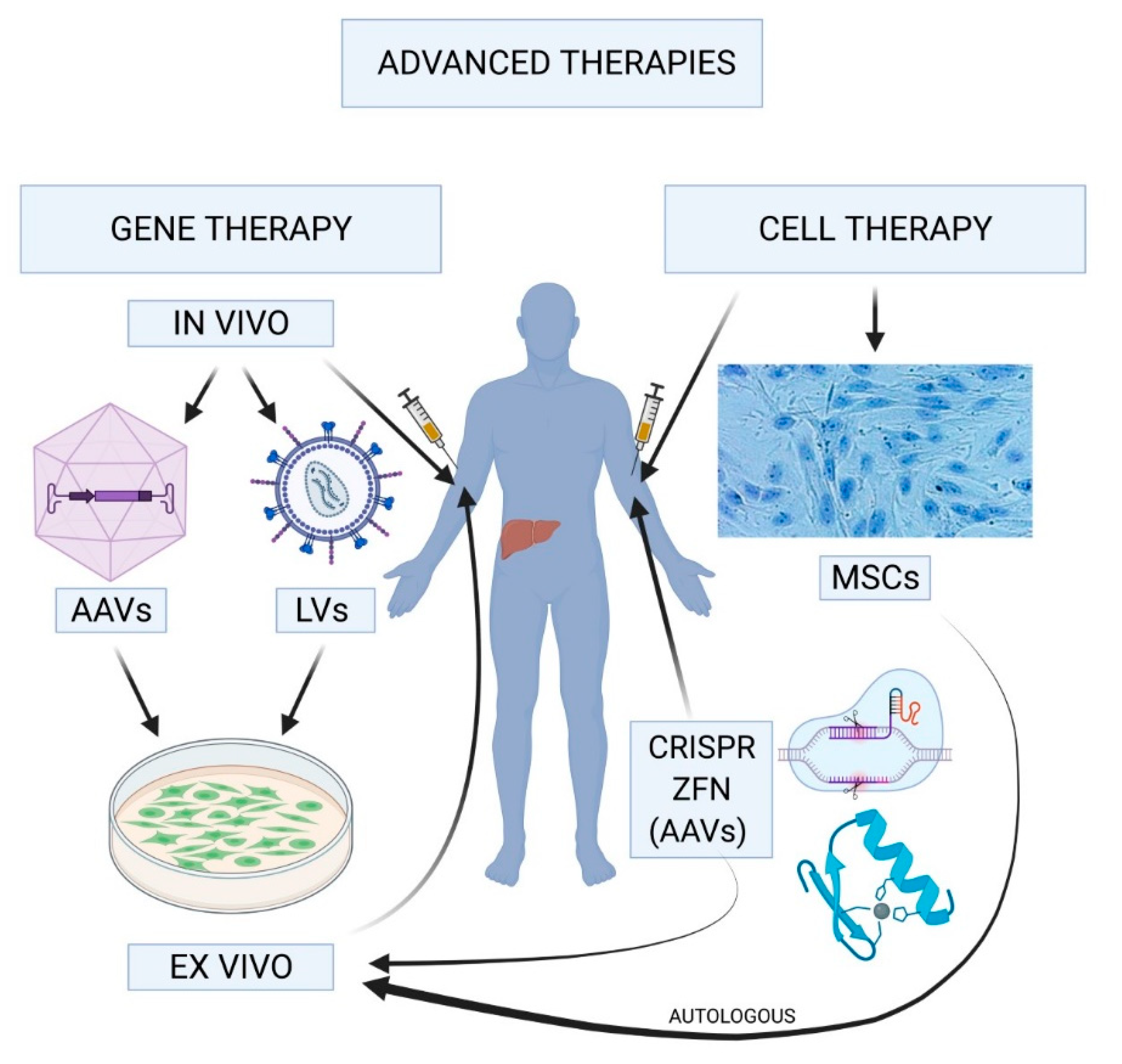Gene therapy for hemophilia represents a revolutionary advancement in the treatment of this inherited bleeding disorder, fundamentally changing how patients manage their health. For those affected by hemophilia, particularly hemophilia B, the traditional reliance on clotting factor infusions can be a daily burden, fraught with anxiety and inconvenience. In recent years, pioneering treatments like Hemgenix have emerged, offering hope through a one-time gene therapy that seeks to provide long-term relief by enabling the body to produce its own clotting factor. This innovative approach not only alleviates the need for frequent injections but also aims to significantly improve the quality of life for patients like Terence Blue, who have spent years grappling with the challenges of hemophilia. As excitement builds within the medical community and among patients, the prospect of effective hemophilia treatment through gene therapy is becoming a reality that many are eager to embrace.
The emergence of innovative treatments like gene therapy for hereditary bleeding disorders such as hemophilia marks a significant milestone in medical science. This approach involves using advanced techniques to introduce corrected genes, which can potentially restore normal blood clotting processes. With therapies specifically designed for hemophilia B, such as Hemgenix, patients are experiencing a shift away from conventional management tactics that involve regular clotting factor injections. Instead, these groundbreaking solutions allow individuals to envision a future with less dependency on daily medical routines and improved physiological health. This transformative concept not only enhances patient autonomy but also ignites hope for a better quality of life for those living with hemophilia.
Understanding Hemophilia: A Lifelong Challenge
Hemophilia is a genetic disorder characterized by the inability of blood to clot properly due to a deficiency in clotting factors. This condition can lead to excessive bleeding and complicates even minor injuries, requiring frequent treatments and lifelong management. Individuals diagnosed with hemophilia suffer from a variety of challenges, including the risk of spontaneous internal bleeding, which can seriously impact their mobility and quality of life. Technological advancements in the treatment of hemophilia, particularly in the production of synthetic clotting factors, have greatly improved patient outcomes, yet the need for regular infusions remains a burden.
For many, like Terence Blue, the reality of living with hemophilia means constant vigilance and anxiety about potential bleeds. From childhood, those affected have to navigate their condition carefully, learning to manage risks effectively through regular medical check-ups and injections of clotting factors. Despite recent advancements, the emotional and social implications of hemophilia can be profound, often causing significant lifestyle restrictions and necessitating adjustments to daily routines.
Revolutionizing Hemophilia Treatment: The Role of Gene Therapy
Gene therapy is emerging as a groundbreaking approach in the treatment of hemophilia, particularly hemophilia B. It works by targeting the genetic mutations responsible for the disease and aims to provide a long-term solution rather than continuous, temporary relief. The FDA’s approval of Hemgenix, a new gene therapy, marks a significant milestone, providing hope for patients who have long managed life with regular factor infusions. The therapy utilizes a modified virus to deliver a healthy copy of the gene responsible for producing clotting factor IX, potentially allowing the body to produce this important protein independently.
This innovative approach could dramatically reduce or even eliminate the need for regular injections of clotting factors, giving patients the freedom to lead more normal lives. The success of gene therapy could redefine hemophilia care, shifting the focus from merely managing symptoms to addressing the underlying causes. With the potential to heal, many patients and healthcare professionals are placed in a transformative position where the phrase ‘cure’ might no longer seem like a distant dream but a reality in the making.
The Market Dynamics of Gene Therapy for Hemophilia
While the onset of gene therapies like Hemgenix brings tremendous potential for patients, it is framed by the intricate dynamics of market acceptance and financial viability. Developing these therapies often requires substantial investment, resulting in high treatment costs that can exceed millions of dollars per dose. This reality presents a double-edged sword; on one hand, the promise of a cure signifies a revolutionary shift in treatment strategy, while on the other, it necessitates a critical evaluation of how these therapies fit into existing healthcare budgets and patient access.
The ongoing discourse within the hemophilia community underscores a critical challenge: balancing the financial hurdles of innovative treatments with the urgent needs of patients. As highlighted by industry experts, it is crucial to ensure that, while making strides in scientific research and patient care, there is also a sustainable model that allows for the widespread availability of these potentially life-changing therapies to those who need them.
Patient Perspectives: Life Before and After Gene Therapy
For patients like Terence Blue, the introduction of gene therapy signifies a profound shift in their lived experience with hemophilia. Previously tethered to a regimen of frequent injections, the possibility of receiving a single treatment that could change the course of their lives is revolutionary. Many individuals burdened by this chronic condition have expressed relief and optimism that, with gene therapies, they may finally escape the repetitive cycle of treatment and its associated stress. The anticipation of living without the constant threat of bleeding and the associated lifestyle restrictions fuels an unparalleled sense of hope.
Moreover, the psychological impact of transitioning from traditional treatment methods to gene therapy cannot be understated. Patients often deal with emotional distress stemming from years of intrusive treatments and the constraints hemophilia imposes on their lives. Gene therapy symbolizes a potential turning point toward improved physical freedom and mental wellbeing, inviting a sense of autonomy and agency previously unobtainable for many. As the therapy takes root, patients report feelings of relief, akin to stepping into a new chapter of life where the chains of hemophilia can begin to loosen.
Challenges in the Adoption of Gene Therapy for Hemophilia
Despite the promise of gene therapies for hemophilia, barriers to widespread adoption remain significant. Patient apprehension about the safety and efficacy of new treatments can lead to hesitance in moving forward. There are lingering concerns regarding the long-term effects of introducing foreign genes into the body, as well as uncertainties related to the potential for adverse reactions. Many patients have developed deep-seated routines around their treatment regimens, making it psychologically challenging to embrace innovative therapies that radically shift their treatment paradigm.
Moreover, the healthcare landscape’s complexity complicates matters, as not every patient has equal access to these new treatments. Insurance coverage varies widely, often leaving patients with difficult choices regarding treatment options. High costs may render gene therapies inaccessible to many who would stand the most to gain. Each of these hurdles must be addressed at an individual and macro level over time to ensure that the benefits of novel therapies like Hemgenix are realized by all segments of the hemophilia community.
The Future of Hemophilia Care: Are We Moving Toward a Cure?
As discussions around gene therapy continue to gain momentum, many are left with the question: is it truly possible to cure hemophilia? The advancements presented by gene therapies indicate a shift from managing a lifelong condition to addressing the root of the issue. Clinical trials have shown promising results, with many patients retaining stable factor levels without regular treatment. This news reinforces the belief that the future could hold a different reality for hemophilia patients, marked by extended periods of health and reduced treatment burdens.
The evolving landscape of gene therapy not only brings hope but also instills a sense of urgency within the medical community to further explore innovative modalities for treatment. As researchers and healthcare practitioners align their efforts, the potential for breakthroughs that could lead to more secure and long-lasting solutions continues to emerge. Ultimately, the rife potential of gene therapy for hemophilia paves the way for a future where patients may no longer need to navigate the challenges of factor shortages and bleeding episodes, thus fostering a healthier, more empowered community.
Understanding Hemophilia B: The Rarer Type of Hemophilia
Hemophilia B, though less common than hemophilia A, affects a significant number of individuals, specifically around 15% of hemophilia patients. It is characterized by a deficiency in clotting factor IX, leading to similar risks of uncontrolled bleeding. Patients with hemophilia B experience many of the same challenges as their hemophilia A counterparts, necessitating regular treatments and careful monitoring to manage their condition effectively. Their life experiences, intertwined with constant vigilance and concern, exemplify the profound impact this genetic disorder has on daily living.
With the advent of innovative treatments like Hemgenix, a focused therapy for hemophilia B, the future holds great promise for this specific patient group. Advancements in gene therapy not only seek to alleviate the symptoms associated with hemophilia B but also aim to restore patients’ independence and quality of life. As they navigate the potential shifts in treatment, patients hold steadfast hope that the breakthroughs in healthcare will ultimately lead to positive outcomes and a future devoid of dependency on frequent factor infusions.
Advancements in Gene Therapy: A Historical Context
The landscape of gene therapy has transformed significantly over the last two decades, moving from experimental laboratory techniques to clinically implemented treatments. The journey toward developing gene therapies, particularly for genetic disorders like hemophilia, has been marked by pioneering research, trials, and collaborations across various biomedical sectors. As scientists and healthcare professionals gathered data and learned from previous experiences, they honed in on methods that target the genetic underpinnings of diseases, shifting treatment paradigms from symptomatic relief to curative interventions.
The approval of Hemgenix serves as a landmark moment, representing the culmination of decades of research and development aimed at understanding the complexities of hemophilia. The increasing approval rates of gene therapies suggest a shifting industry focus that prioritizes precision medicine, aiming to tailor treatments. As the pipeline for future therapies continues to expand, so does the hope that numerous conditions will soon receive breakthroughs that leverage the principles of genetic engineering and therapy, paving the way for a new era of personalized healthcare.
Living with Hemophilia: Resilience in the Face of Adversity
The journey of living with hemophilia fosters remarkable resilience among those affected. Patients often navigate a myriad of challenges, adapting their lifestyles and routines to accommodate the requirements of managing their condition. This resilience shines through as individuals learn to prioritize their health, engage in proactive self-care, and advocate for their medical needs. Such proactive engagement not only aids in effective management but also instills a sense of purpose and control, allowing patients to live their lives as fully as possible despite the constraints of their condition.
Moreover, living with chronic conditions like hemophilia often leads to the forging of strong community bonds among patients. Support networks frequently provide emotional and practical support, strengthening their resolve against the adversities they face. Uniting through shared experiences, these groups can amplify awareness while shaping healthcare policies and interventions that improve the landscape of hemophilia treatment. Together, patients illuminate the power of resilience in transforming their narratives from mere survival to thriving in the face of chronic challenges.
Frequently Asked Questions
What is gene therapy for hemophilia and how does it work?
Gene therapy for hemophilia aims to correct the underlying genetic defect that prevents the body from producing sufficient clotting factors. Specifically, in hemophilia B, gene therapy introduces a copy of the gene responsible for producing clotting factor IX. This is often achieved using a viral vector to deliver the corrected gene into liver cells, enabling them to produce factor IX and thereby reducing bleeding episodes.
What are the benefits of using Hemgenix as a gene therapy for hemophilia?
Hemgenix is a revolutionary gene therapy for hemophilia B that offers significant benefits, including long-term production of clotting factor IX after a single infusion. Patients have reported reduced or eliminated need for regular factor replacement therapy, leading to fewer bleeding episodes and improved quality of life. Clinical trials show that many patients remain free from prophylactic factor IX treatment for years.
Is gene therapy for hemophilia safe?
Yes, gene therapy for hemophilia, including treatments like Hemgenix, has undergone rigorous clinical trials to assess safety and efficacy. Most patients experience manageable side effects and many report a significant reduction in bleeding episodes, enhancing their overall health and well-being. As with any medical treatment, it is crucial to discuss potential risks with healthcare providers.
How does Hemgenix compare to traditional hemophilia treatments?
Unlike traditional hemophilia treatments that require regular injections of clotting factors, Hemgenix offers a potentially one-time solution by enabling the body to produce its own factor IX. This not only reduces the burden of frequent injections but also aims to provide long-lasting protection against bleeding, significantly improving the patient’s lifestyle and healthcare outcomes.
Who is an ideal candidate for gene therapy for hemophilia?
An ideal candidate for gene therapy for hemophilia is typically an adult or child with hemophilia B who has been previously treated with clotting factor but experiences frequent bleeding episodes. Factors such as the severity of the condition, overall health, and individual preferences will also be considered by healthcare providers to determine suitability for gene therapies like Hemgenix.
What are the costs associated with gene therapy for hemophilia like Hemgenix?
The cost of gene therapy for hemophilia, such as Hemgenix, can be quite high, with treatment prices often exceeding $3 million. However, insurance coverage may lower out-of-pocket costs for patients. It’s essential for patients to discuss financial options and coverage with their healthcare provider and insurance company to understand the total expenses involved.
What should patients expect after receiving gene therapy for hemophilia?
After receiving gene therapy for hemophilia, such as Hemgenix, patients may experience a period of observation for potential side effects. They should also monitor their factor IX levels regularly. Most importantly, patients can anticipate fewer bleeding episodes and may notice a significant improvement in their quality of life as their bodies begin producing sufficient clotting factors.
Are there any side effects associated with gene therapy for hemophilia?
While gene therapy for hemophilia is generally considered safe, patients may experience side effects, which can include temporary liver enzyme elevations or allergic reactions to the viral vector. These side effects are usually manageable, and ongoing monitoring by healthcare professionals is essential to address any concerns promptly.
How effective is Hemgenix in treating hemophilia B?
Hemgenix has shown effectiveness in clinical trials, with a significant percentage of patients remaining free from the need for prophylactic factor IX treatment up to three years after receiving the therapy. This promising data indicates that gene therapy can dramatically reduce bleeding episodes and potentially alter the course of hemophilia B management.
What future developments can we expect in gene therapy for hemophilia?
As research continues, we can expect advancements in gene therapy technologies, improving both effectiveness and safety profiles. Future developments may include new therapies that target different types of hemophilia, refinements in delivery methods, and possibly the emergence of multiple gene therapy options, expanding patient choice and access to innovative treatments.
| Key Points | Details |
|---|---|
| Introduction of Hemgenix | Terence Blue became the first patient in New England to receive this gene therapy for hemophilia B. |
| Long Management of Hemophilia | Terence has been managing hemophilia since childhood, requiring regular treatments and hospital visits. |
| Advancement in Gene Therapy | Hemgenix represents a significant leap in hemophilia treatment, aiming to alleviate lifelong dependence on clotting factor injections. |
| Market Challenges | High costs and market pressures have led to some gene therapies being withdrawn soon after approval. |
| Patient Experience | Terence expressed relief over the possibility of reducing his dependence on needles and treatments. |
| Initial Treatment Details | The infusion treatment was relatively routine and took about two hours, with few reported side effects. |
| Therapy Effectiveness | As of mid-March, Terence’s factor IX levels improved significantly, showing promising results from the therapy. |
| Future Prognosis | Clinical trials suggest many treated with Hemgenix may not require future prophylactic treatments. |
Summary
Gene therapy for hemophilia is a revolutionary approach that holds the potential to greatly improve the quality of life for patients like Terence Blue, who have managed the condition for years. With innovative treatments such as Hemgenix now available, patients might find relief from the daily burden of needle injections and the constant fear of bleeding episodes, signaling a new era in hemophilia management.




